Indian contemporary art forms that you see today, have actually branched out from the paintings of cave men. Know more about the magnificence of these early precursors and how they still manage to woo artists of modern times.
Why did the early man take to painting and when? What prompted him to conjure up colours? Was it a mere desire to depict the vistas he has perceived, or was it something else? Even though we can never get the hang of why and how the craft started, we now know how he had made use of his cave walls as his canvas and every earthly element possible as his tools. And, it gave birth to the amazing art, eventually.
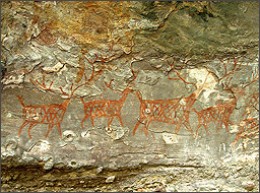
How Could the Mystical Land of India Escape the Trend?
Prehistory has witnessed the growth of fine Indian artists who have availed themselves to the rock media. The most pronounced examples can be found in the Ajanta and Ellora caves where the murals stand to this day. Other evidences include the paintings of the Bagh caves and those in the Sittanavasal monastery.
Of course, the geography of the land and the diversity of cultures were two huge factors that had encouraged the art to flourish in the country. An interesting fact here is, the paintings have been amazingly preserved over time, although such creations are often believed to be short-lived.
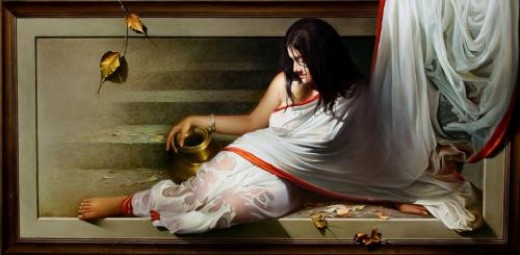
The Art had then Travelled Down from Prehistory to Ancient and Medieval Times.
If you travel to every nook and corner of the country, you are sure to find thousands of little caves and rock shelters that still depict the prehistoric paintings that were carved on their walls. Some of these creations are as old as 30,000 years, or perhaps even more. From the mighty Himalayas to the coastline of Tamil Nadu, you will discover that the trend had spread all over the land of that time. Mentioned below are some of the places, where the craft initiated by the early man influenced people to carry forward the legacy in its purest form.
The Ezhuthola Paintings of Kerala:
Almost in a dilapidated state now, the Ezhuthola cave paintings are perhaps the most beautiful creations of the prehistoric times. The cave is located in the Marayur-Chinnar forest belt of Kerala and contains twenty-one amazing depictions in red ochre. Although they still stay away from the interest of researchers, the Ezhuthola paintings, mostly speak about life during the prehistoric times, with humans and animals being the prime subjects.
The Exquisite Jogimara Cave Art of Chattisgarh:
The cave is a home to some of the most exquisite paintings of the first century BC. The creations are clear hints toward the first ever, planned attempt to beautify the premises of a land. There are depictions on the walls and ceilings and they have been created in two layers. Line drawings are very prominent, along with the use of red, black, yellow and white colours. A red outline, in fact, is very typical of these drawings. There are human figures, fishes, elephants, flowers, birds, and chariots painted everywhere. However, they speak nothing about religion.
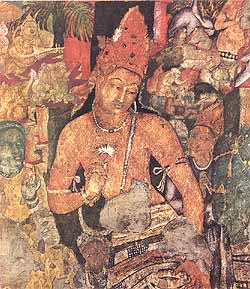
The Frescoes of Ajanta:
Located in the district of Aurangabad in Maharashtra, these creations date back to the ancient period of Mahayana Buddhism. If you study them closely, you will notice how they focus primarily on the life and teachings of Gautam Buddha. Depiction of mythical characters is common. So, you will see a lot of goddesses, Nagas, Yakshas, Vrikshikas, and other beings who were integral parts of that era’s supernatural essence. Cave 10 of the entire lot, has the oldest Indian paintings created around the first century BC.
The creations are unique. They are frescoes done on mud plaster and with earth colours. You will find them practically everywhere – on the walls and even on ceilings, speaking about the life of that period in the court, for feasts and celebrations, for men and women, of festivals, and of flora and fauna, too. The most important aspect of these paintings is that, the artists of those times had made use of shading techniques to impart a three-dimensional effect, which is a huge advancement of the art.
The Mural Paintings in Kailasa Temple of Ellora:
Although the paintings were present in five of the caves of Ellora, only the ones present in the Kailasa temple could be successfully preserved. The most intriguing thing about the mural paintings of Ellora is, there were not completed in one go, and were carried out in two series. The initial round was during the carving of the caves and the final round happened centuries later.
The drawings depict very discrete features of pointed noses and sharp, sturdy figures. Prominent, protruding eyes, a typical facial characteristic of the people of Gujarat, was first seen in these creations within the caves of Ellora. This is a big evidence about the inter-regional influences that were dominating in that era. The latter series portrays a lot of Shaivism, which indicates that years later, the influence of religion was full-on.
The Paintings in Bagh Caves:
Situated on the banks of River Bagh in Madhya Pradesh is a group of nine rock-cut caves, together known as the Bagh caves. Within the sturdy walls are present, some stupendous paintings that date back to the period between the fifth and seventh century. Interestingly, the medium, which has been used to create them, is tempera, something very unusual in that era. The drawings have been prepared on a reddish-brown mud plaster applied to the walls and ceilings. This plaster has been primed with lime and the creations executed on them. Buddhism has been a big influence for the artists of that era.
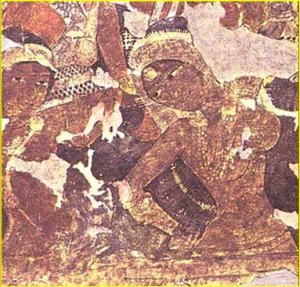
The Sittanavasal Frescoes:
The Sittanavasal caves are located in the Pudukottai district of Tamil Nadu. These creations in the walls are very similar to those present in Ajanta, and are believed to be a link between them and the Chola illustrations of Thanjavur. They also show the deep impact of the ninth century Pandyan period. The themes are mostly of animals, birds, lotuses and dancing human figures.
The drawings have been composed mostly with the colour white, which has been prepared from lime. Other colours include black, prepared from wood charcoal, red from red ochre, yellow from yellow ochre, blue from Lapis Lazuli stones, and olive-green from terre verte (earth green).
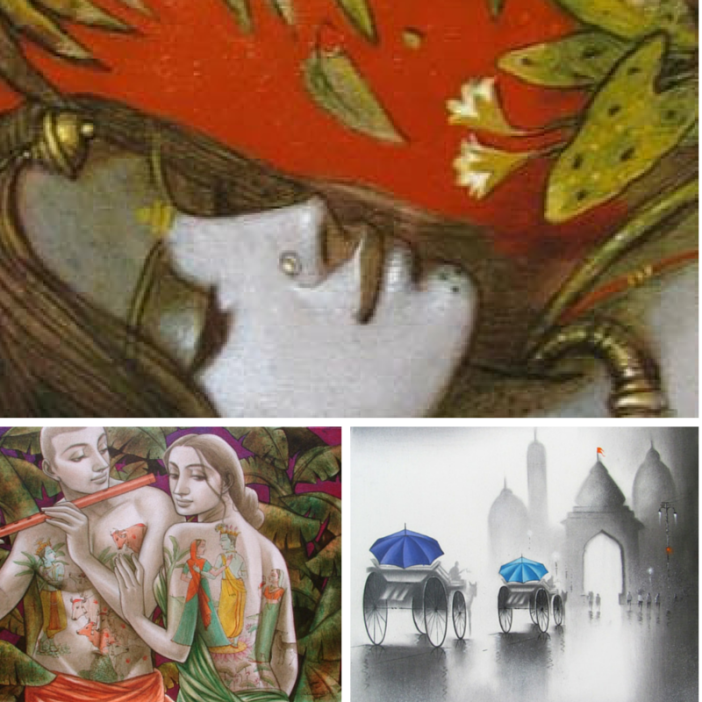
The Kanker Cave Paintings:
These drawings have been very recently discovered, and are believed to be 10,000 years old, hinting that they belong to the prehistoric era. The creations are done using natural earth colours and have astonishingly remained intact all these centuries. The carvings are strange, and depict human-like figures with weapon-like things in their hands. Eerily, these figures lack a nose and mouth. Scientists strongly believe that the depiction is about aliens because some of the drawings show the figures wearing dresses that resemble space suits. If all these claims come true, this is going to be a groundbreaking discovery, which will give us an insight into the connection of prehistoric men with life from beyond the Earth.
These Ancient Creations Have Shaped Contemporary Art of Today:
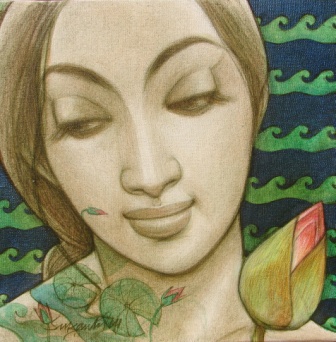
Prehistoric paintings are in fact, an alternative trend to the contemporary creations of today. What is new is actually a revival of the old that has flourished with the inspiration of ancient ideas. Take up any Indian art gallery online, and you will see how ‘abstraction’ is a huge aspect of the beautiful paintings of today. In addition, there are colours that are superimposed and non-representational – prehistoric styles in every way.
The relation between the two forms of two different periods of time is, indeed, very dynamic. And, the evolution is still on. May be the purposes have changed. But, the wish to create masterpieces, still remains the same.







.jpg)
.jpg&container=blogger&gadget=a&rewriteMime=image%2F*)
.jpg)
.jpg)
.jpg&container=blogger&gadget=a&rewriteMime=image%2F*)
0 comments:
Post a Comment
Bollywood Evergreen Songs Here Free